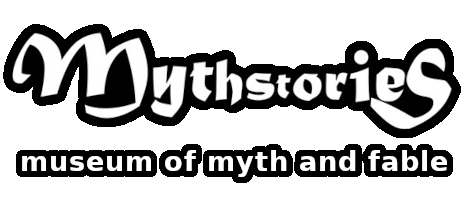
the story
Divine Weapons
When they arrived the sage taught the boys the arts of fighting demons and gave to them the use of divine weapons known only to him. There was the wind god’s power; the blast of Agni, the fire god; the thunderbolt of Indra, the god of heaven; and lastly, the most powerful weapon, the gift of Lord Brahma, which took on any shape or form and was the very noose of death. The boys mastered the use of all these weapons and learnt great spiritual knowledge from the old man. They were ready to face the demons and stood steadfast guardians of the sacrificial altar.
When the demons saw the smoke rising up towards the heavens they rushed in great numbers to disrupt the sacrifice but were met by the might of Rama and Lakshmana. The demons were filled with fear when they felt the blows of the noble young warriors. Rama killed the leader Maricha with an awesome thunderbolt, Lakshmana pierced another demon’s heart with a spear of fire and the demons were scattered with the wind god’s weapon.
The old sage bid them farewell and Rama and Lakshmana, now both men, set off to return to Kosala. On their way back they had to pass through the kingdom of King Janaka.

See the automata in action here – https://youtube.com/shorts/eI66JOC13xo
Background facts
Not Just Skilled with Weapons – Yoga
Yoga in the west today is seen as a form of exercise or a way to keep fit. In reality it is a system to train the body to aid the mind’s search for oneness with World soul (the spirit that governs everything). In a recent scientific test in Delhi, Yogis and Yoginis (males and females who practice yoga) showed that they could control their breathing and regulate their heartbeats. They could also withstand extremes of hot and cold with no physical reaction.

More About Gods
Lord Brahma, the god of creation is one of the trinity of major Hindu gods together with Shiva and Vishnu. Today his importance has diminished as most Hindus belong to sects with Shiva, Vishnu or Devi (the goddess) as their main deity. Brahma is usually portrayed with four heads and four arms riding upon a swan or goose. He can be shown carrying the Vedas (the holy books), a sceptre, prayer beads, a water pot, a sacrificial spoon or a bow.
Varu, the wind god, is one of the lesser gods but also has great power being seen as the life giver and the bringer of fragrance to the world. He is also the father of Hanuman, the monkey who plays a major role in the Ramayana.
Indra, the bringer of rain is the guardian of the heavens and a great warrior as well as being a storm god. He rides upon a massive white elephant called Airavata, which is shown with four tusks. Indra lives atop Mount Meru in the Himalayas between heaven and earth.
Agni, the fire god, acts as a link between people and the gods. It is within his sacred flames that messages are taken from the earthly to the heavenly realm. Agni consumes sacrifices and offerings and takes them as his fires cleanse the world of sin. Agni is portrayed with three heads behind which flames flicker. Agni’s vehicle is Vahana the ram.
Lord Vishnu, in the context of the Ramayana, is worthy of special mention. Vishnu is the preserver and protector of all living things. Whenever the world is threatened he comes to the earth in worldly form to save us from peril. One of these earthly guises (avatars) was the Prince Rama, his mission to rid the world of Ravana, the evil ten-headed demon.
In his godly form Vishnu wears a tall jewelled crown and is often seen seated upon a throne. Usually he has four arms in which he carries a lotus, a conch shell, a discus and a club. His vehicle is an eagle-like creature called Garuda (often depicted as half-man, half-bird).

The Ten Avatars of Lord Vishnu
- The Fish (Matsya). Vishnu, in the form of an horned fish, came to save the world from a great flood. He towed a great ark full with seeds of the world’s plants to the one remaining mountain peak. Manu, the ark’s builder, planted these seeds to renew life.
- The Tortoise (Kurma). During the churning of the sea of creation Vishnu turned into a giant tortoise and dived to the bottom of the sea. The mountain used as a churning rod was placed on his back the better to turn.
- The Boar (Varaha). When a demon cast the earth to the bottom of the ocean of creation, Vishnu turned into a boar to dive in and retrieve it. He placed it on the sea’s surface to float for all time.
- The Man-Lion (Narasimha). A demon had been granted the boon that it could not be killed by man or animal; inside or outside its house; by day or by night. It roamed the world causing distress and chaos. Vishnu became half-man, half-lion to kill the demon. He was neither man nor animal. He executed the demon on its threshold, neither in nor out of the house, at sunset – neither day nor night.
- The Dwarf (Vamana). Vishnu defeated another demon. As a dwarf, he pleaded with the demon to give him as much land as he could cover in three strides. The demon agreed to this trifling request; Vishnu became a giant and strode across the earth and heavens in three paces.
- Rama with the Axe (Parashurama). When the Kshatriya (warrior and ruler) caste became so strong that they threatened to overthrow the higher Brahmin (priestly) caste Vishnu was born as a Brahmin to defeat them.
- Rama Prince of Ayodhya – see the Ramayana
- Krishna (the eighth child of Devaki). Prophets had foretold that the eighth child of Devaki would kill the wicked, despotic King Kansa. Vishnu was born as this son, Krishna. As a baby, to protect him from Kansa’s murderous intentions, he was fostered by a lowly cowherd and his family. He defeated many demons, even as a child, and went on the kill Kansa and rule over his kingdom wisely and fairly. Later he appears as charioteer and counsellor to Arjuna in the epic The Mahabharata. His advice forms the Hindu sacred text ‘The Bhagavad Gita’. In this form, Vishnu is probably Hinduism’s most widely worshiped god.
- Buddha? This is the religious teacher and founder of Buddhism. This causes some controversy; some say Vishnu was born as the Buddha to teach evil people wrong ideas; others that Vishnu was teaching love and respect for all things (the Hindu creed of non-violence stems from Buddha’s teachings). Some Hindus avoid controversy by crediting Balkrisha (Krishna’s brother) in the role of Vishnu’s ninth avatar.
- Kalkin. Kalkin is the incarnation still to come. Vishnu will come riding a white horse carrying a flaming sword to herald the end of our age.

go to part 4
expanded by an illuminate project funded by…






1 Pingback